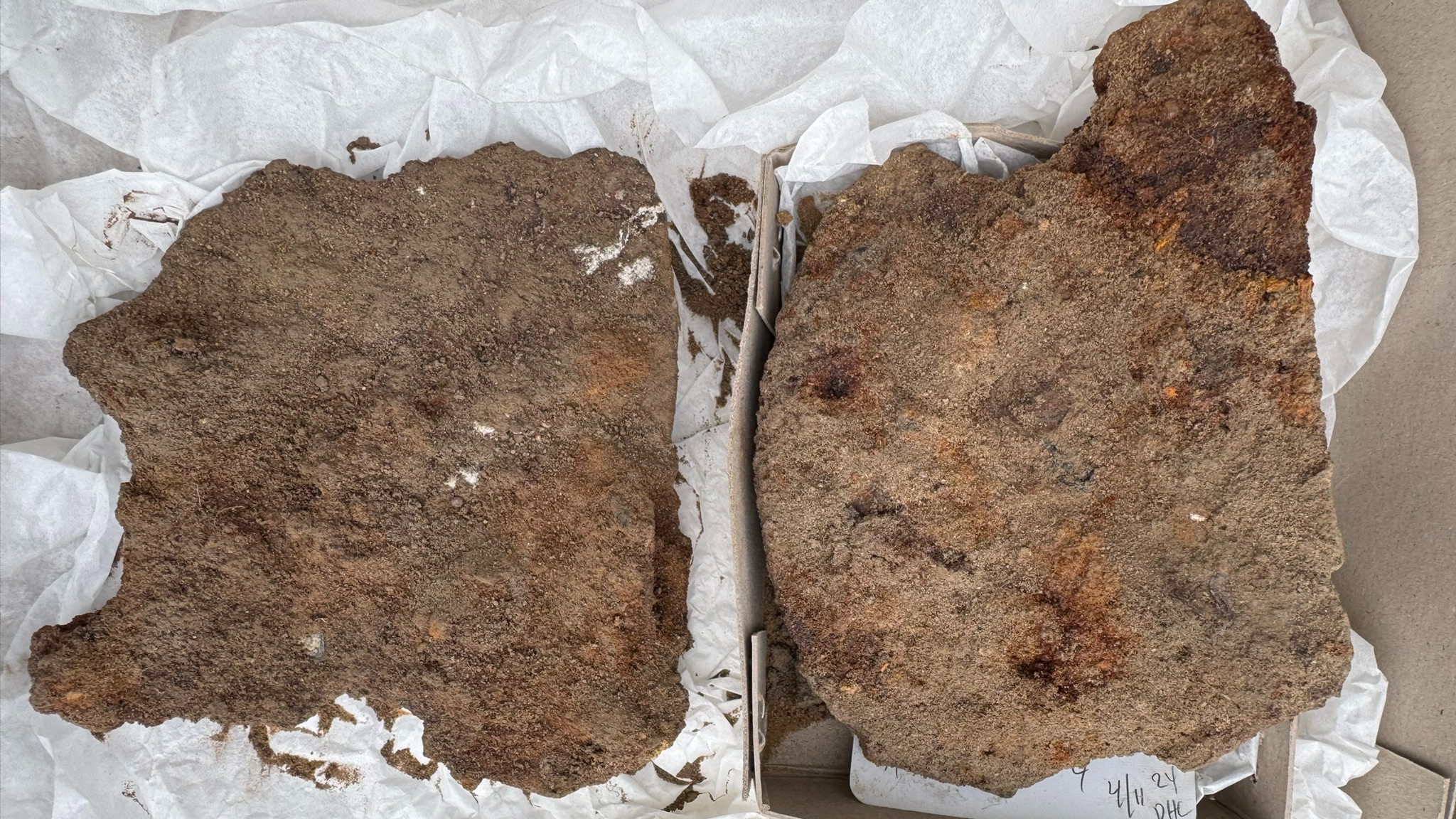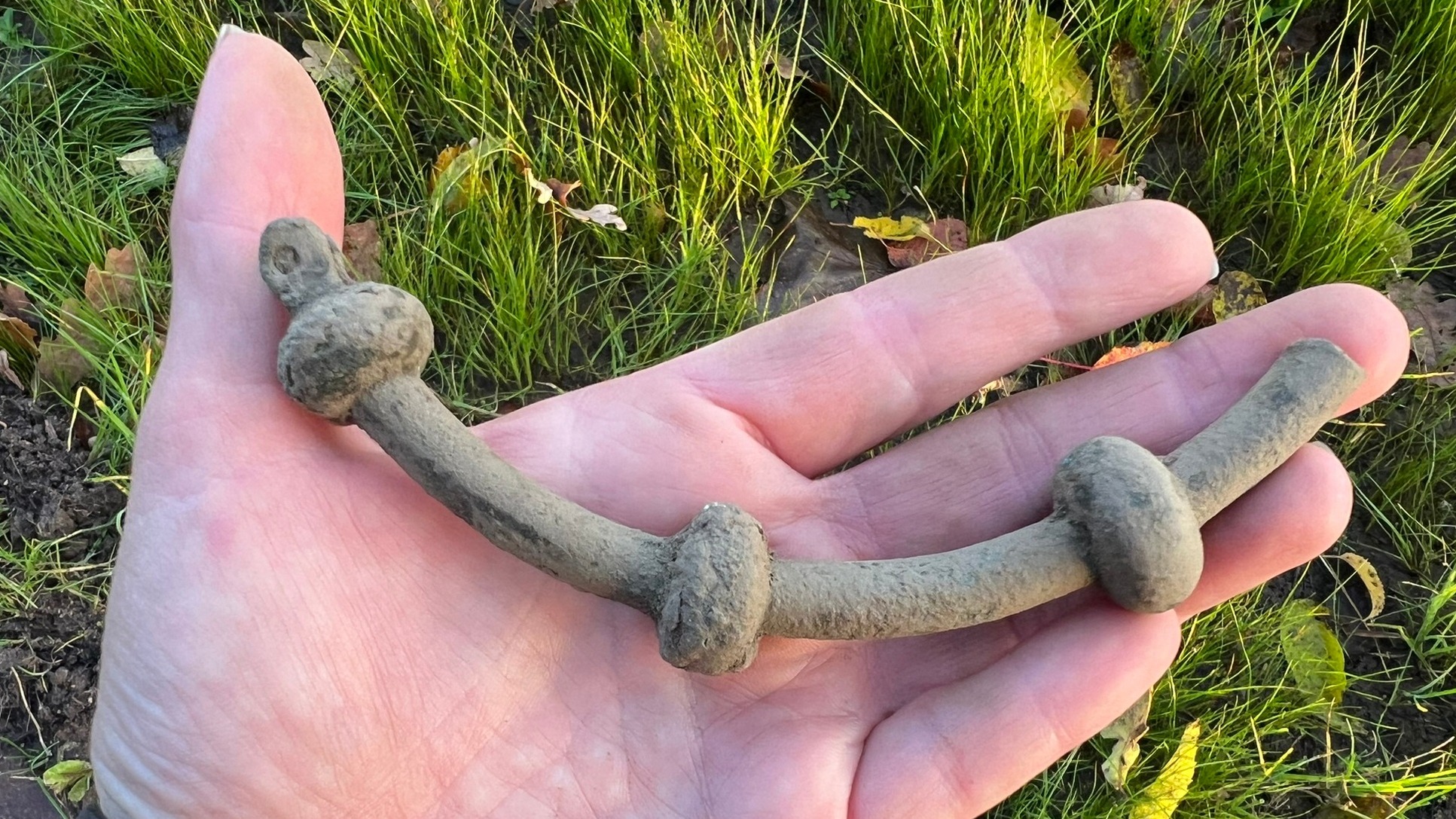
Archaeologists in Denmark have discovered a cache of more than 100 weapons buried under the house of an Iron Age chieftain. The 1,500-year-old collection — which is big enough to equip a small army and includes the only Roman helmet ever found in Denmark — may have been a "sacrifice" or offering.
"The sheer number of weapons is astonishing, but what fascinates me most is the glimpse they provide into the societal structure and daily life of the Iron Age," Elias Witte Thomasen, an archaeologist at Vejle Museums who led the excavation, said in a statement in November 2024. "We suddenly feel very close to the people who lived here 1,500 years ago."
Between the first and fourth centuries A.D., Denmark was on the periphery of the Roman Empire as part of greater Germania. Most people in this area were simple farmers, but Romans such as Julius Caesar wrote about violent Germanic warriors. Some scholars think that the Romans may even have provided the tribes in Denmark with weapons, possibly to keep the peace at the border with Scandinavia.
Archaeologists found the cache during a highway expansion project in August at a site called Løsning Søndermark. The metal weapons lay beneath two early fifth-century houses that likely belonged to someone powerful enough to raise an army. Because the weapons were purposefully buried during a house demolition, researchers think that they were sacrificed after success in war. The cache of metal objects included 119 lances and spears, eight swords, five knives, one ax and a rare set of chainmail.
Very few examples of Iron Age chainmail have been found in southern Scandinavia, and the Løsning chainmail is the first to be recovered from a settlement site rather than a burial, according to the statement. This elaborate piece of armor was expensive and time-consuming to produce, so it probably belonged to the chieftain himself, according to the archaeologists.
Related: Ancient stone circles in Norway were hiding a dark secret: dozens of children's graves

A couple of months later, the researchers discovered fragments of an "exceptionally rare" Roman helmet — the first of its kind in Denmark, according to a Feb. 3, 2025, statement. Although the helmet was extremely rusted, researchers were able to use X-ray imaging to see the neck plate and decorated cheek plate underneath the rust. These fragments come from a crest helmet, which was often used in the Roman Empire in the fourth century.
"The helmet may have belonged to a Germanic warlord who served in the Roman auxiliaries," Thomasen said in the latest statement. "Alternatively, it could have been looted from a Roman legionary [soldier] in battles closer to the Empire's Germanic frontier."

In addition to the weapons, archaeologists found fragments of two bronze neck rings known as "oath rings." These accessories were symbols of power in the Iron Age, further attesting to the chieftain's influence. The team also found fragments of a horse bridle and a bugle, as well as a number of iron and bronze objects that have yet to be studied.
Although the weapons cache has been clearly linked to an Iron Age chief's house, archaeologists are unsure whether the objects belonged to local warriors or were amassed as the spoils of war. However, a similar Iron Age hoard found in the town of Vindelev, just 10 miles (16 kilometers) west of Løsning, points to the presence of numerous powerful chieftains in the area.

The researchers will continue their analysis of the site and its weapons sacrifice to better understand Iron Age warriors and society.
Many of the artifacts found in this excavation will go on display at the Cultural Museum in Vejle starting Feb. 8, according to the statement.
Editor's note: This story was originally published Dec. 2, 2024, and was updated Feb. 3, 2025, with news of the helmet's discovery.







